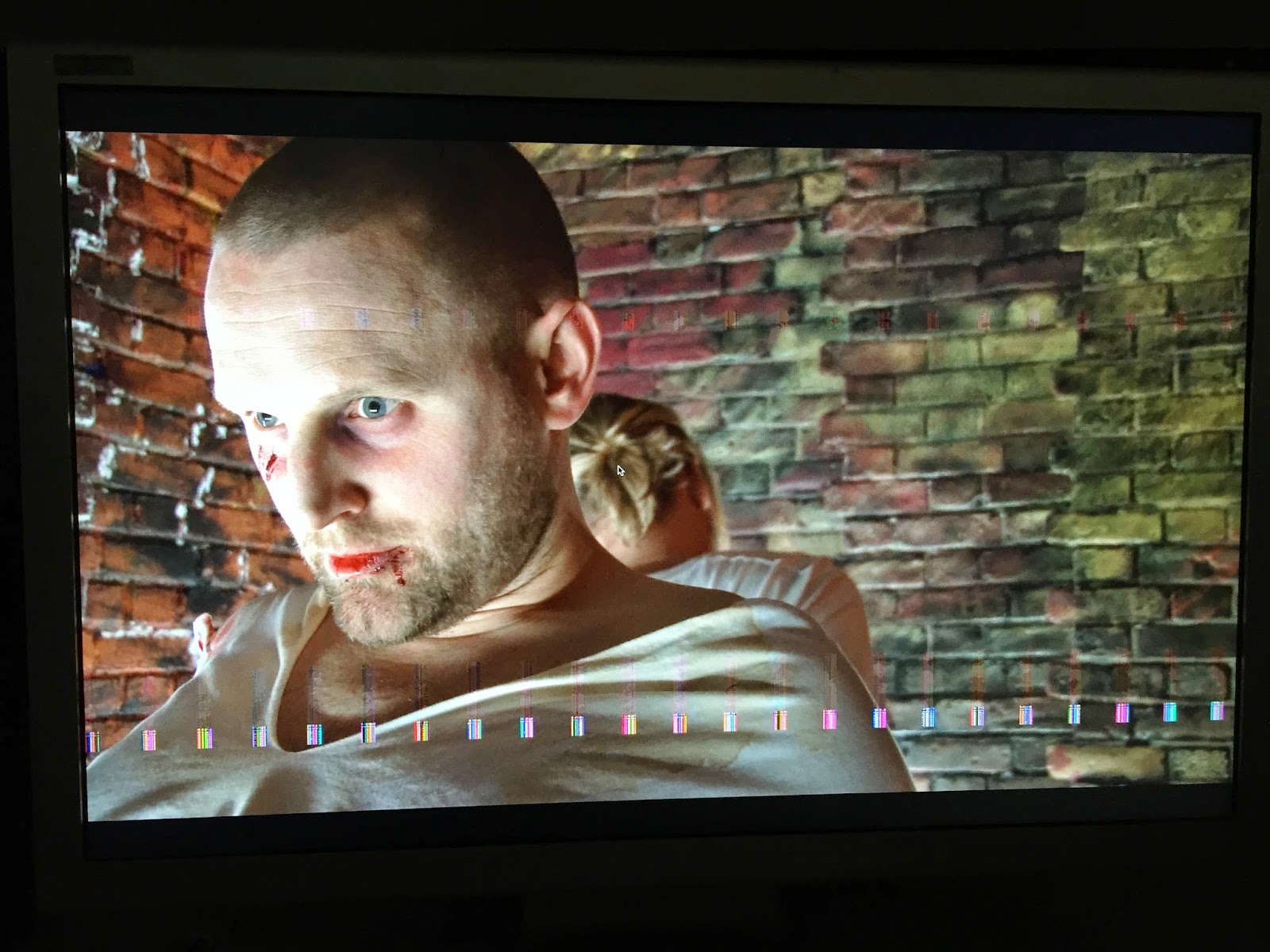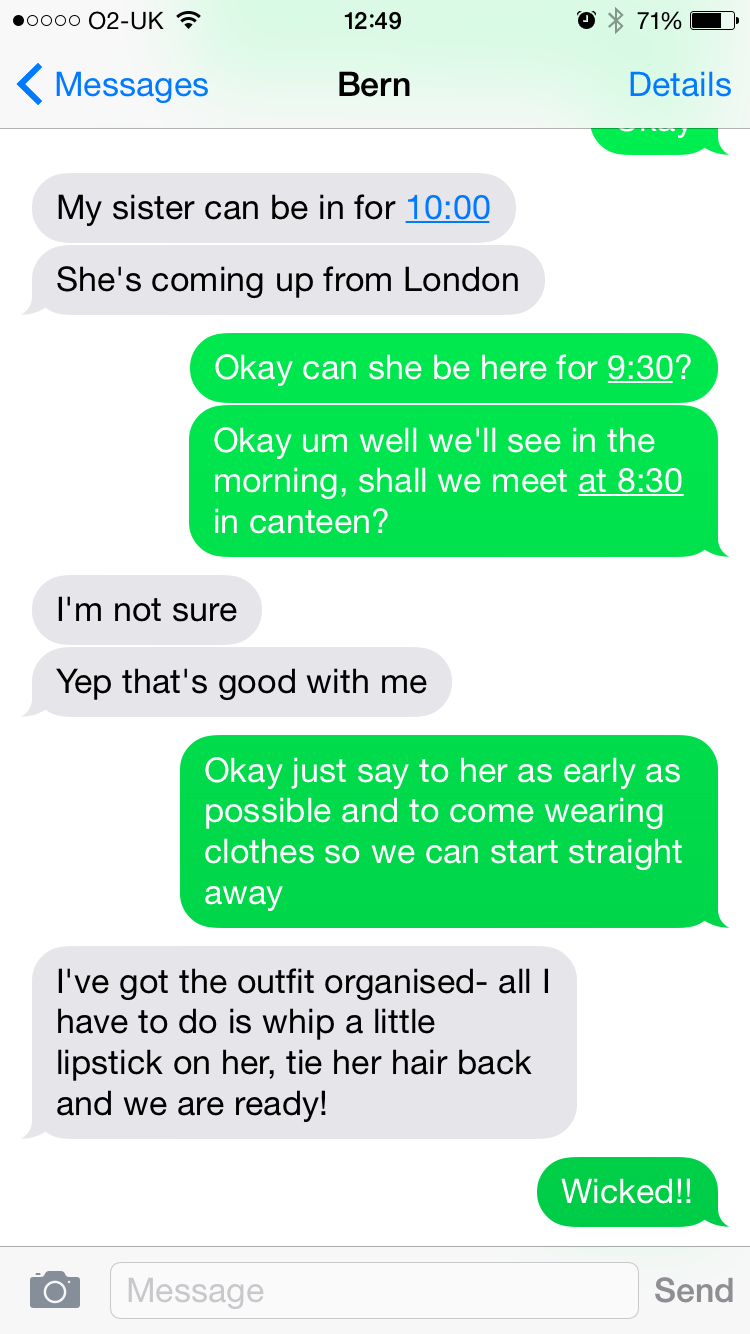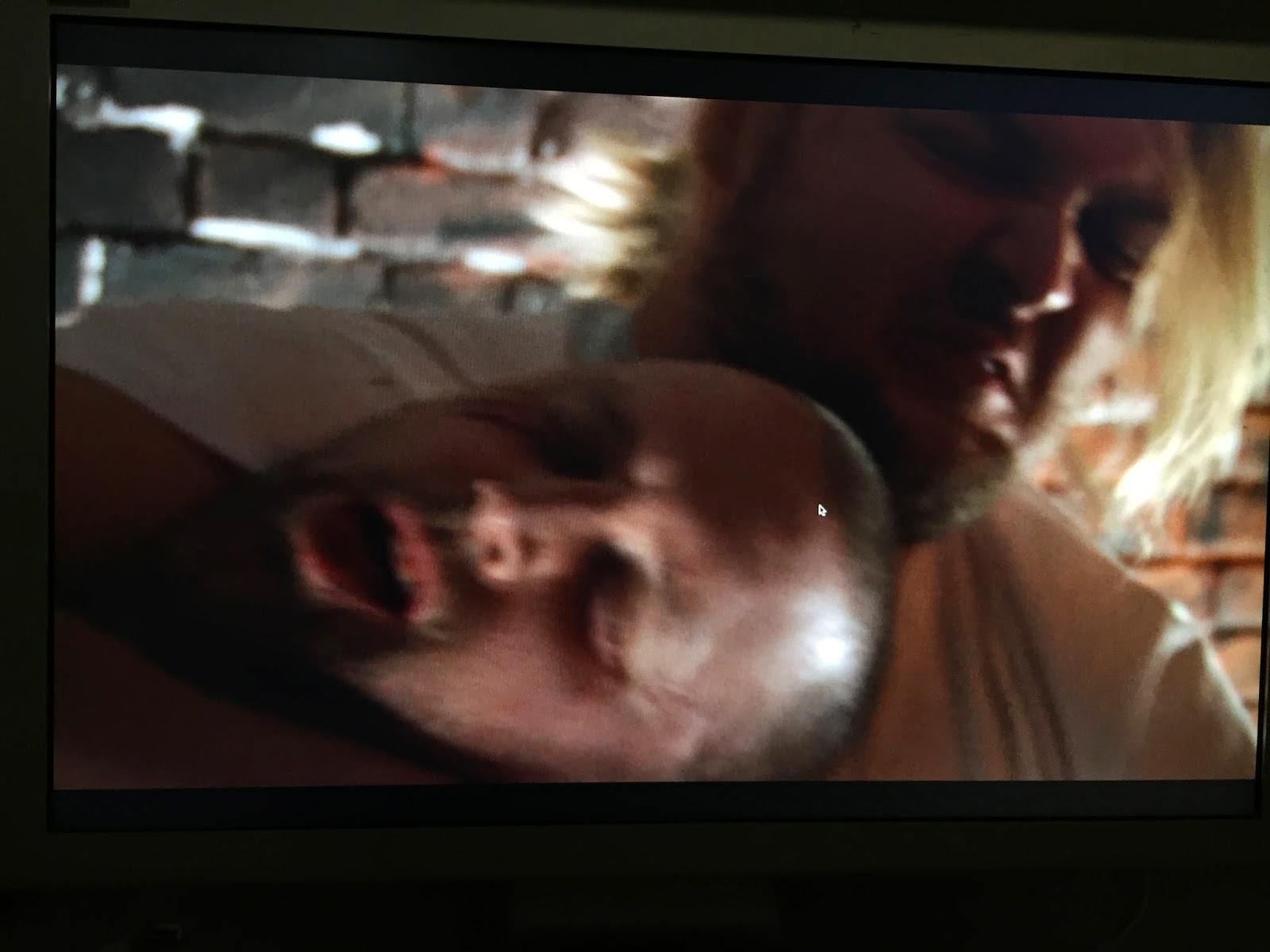Bern and I stayed in contact to check that each of us had everything we needed before shoot day as Bern was away the day before. Therefore we used SMS messaging to contact one another.
Sunday, 22 February 2015
Lighting on Set
Although we originally planned to use a swinging, naked light bulb we ended up using floor lighting, which was very bright. We placed the long lights at the back of each of the three walls and purposefully got them in shot as they ended up becoming part of the set. We thought the the capturers could have used this lighting to enhance their torture as well as it makes the characters look a lot more exhausted.
Wednesday, 4 February 2015
Social Groups- Camera, Mise-en-scene, Editing and Sound
 A social group is a group of people who are similar to each other and share similar characteristics. The target audience for our thriller is male 18-25 year olds and therefore we made certain decisions during the production process to appeal to this specific group. For example I used mise-en-scene as a technique to appeal to a younger audience. The mise-en-scene in our thriller included a dramatic fight scene, stage make up (blood and scars) and tension which are all techniques that are used to appeal to young adult males. The actors used for the thriller are two typical adult males, both married and both have things to be proud of. The representation of these characters therefore isn’t heroic, however, it shows both their strengths and how much pain they are prepared to go through in this particular scenario. I believe these characteristics will appeal to a young male audience as well as they detailed set design. They are based in a dark dreary room with not a huge amount of lighting which conveys the features of a thriller film. Additionally, the chairs are wrapped in black bin liners adding to the darkness of the set. The make up adds to the gore of the opening title sequence and show how beaten these characters already are from the beginning. All of these features are typically interesting to young adult males which is why we chose the array of mise-en-scene we did.
A social group is a group of people who are similar to each other and share similar characteristics. The target audience for our thriller is male 18-25 year olds and therefore we made certain decisions during the production process to appeal to this specific group. For example I used mise-en-scene as a technique to appeal to a younger audience. The mise-en-scene in our thriller included a dramatic fight scene, stage make up (blood and scars) and tension which are all techniques that are used to appeal to young adult males. The actors used for the thriller are two typical adult males, both married and both have things to be proud of. The representation of these characters therefore isn’t heroic, however, it shows both their strengths and how much pain they are prepared to go through in this particular scenario. I believe these characteristics will appeal to a young male audience as well as they detailed set design. They are based in a dark dreary room with not a huge amount of lighting which conveys the features of a thriller film. Additionally, the chairs are wrapped in black bin liners adding to the darkness of the set. The make up adds to the gore of the opening title sequence and show how beaten these characters already are from the beginning. All of these features are typically interesting to young adult males which is why we chose the array of mise-en-scene we did. The camera angles were carefully storyboarded and thought through to create a positive representation of these characters from the beginning to a slightly more negative one at the end. For example I introduced the first victim as the central focus of the narrative, as an audience thinking he’s alone and feeling sorry for him. The audience empathise the main victim, as he appears to be hurt and vulnerable. We then move to an extreme close up of his face, revealing the scars and cuts to create tension which is a convention of a thriller. These camera angles appear to be positive towards this character from the start, however, when we reveal that he is not reluctant to killing another man to answer the phone call himself we start to feel less sorry for him. Many camera angles are filmed from a high angle, making the characters look smaller and weaker and therefore less likely to want a fight. I chose to do this to adhere stereotypes about typical heroes and sometimes the underdogs of the films can also be a hero. However, I still believe that these camera angles and slowly revealing characters to build tension will be popular with young adult males due to the extreme close ups, revealing lots of gore as well as the tension that is built throughout the opening sequence.
The camera angles were carefully storyboarded and thought through to create a positive representation of these characters from the beginning to a slightly more negative one at the end. For example I introduced the first victim as the central focus of the narrative, as an audience thinking he’s alone and feeling sorry for him. The audience empathise the main victim, as he appears to be hurt and vulnerable. We then move to an extreme close up of his face, revealing the scars and cuts to create tension which is a convention of a thriller. These camera angles appear to be positive towards this character from the start, however, when we reveal that he is not reluctant to killing another man to answer the phone call himself we start to feel less sorry for him. Many camera angles are filmed from a high angle, making the characters look smaller and weaker and therefore less likely to want a fight. I chose to do this to adhere stereotypes about typical heroes and sometimes the underdogs of the films can also be a hero. However, I still believe that these camera angles and slowly revealing characters to build tension will be popular with young adult males due to the extreme close ups, revealing lots of gore as well as the tension that is built throughout the opening sequence.  I added sound to the thriller to add atmosphere in the opening sequence. For example, I started out from thinking what sound can they hear a mile away, what can they hear 100m away and what can they hear in the room and then gradually placed and cut our sound effects in, using Adobe Premier. Taking this research into consideration, I used the diegetic sound of an underground train, to make the room feel like it was claustrophobic and underground. Additionally I emphasised the sound effect of a heartbeat and added water drip sound effects to create the illusion for the audience that the room is damp, dark and creepy. As a phone ring is constantly playing from the middle and throughout, I found a vibration and old ringtone from the sound effects and merged them together to make it sound like they were playing at the same time. Moreover, I placed them evenly apart from each other as a real phone ring rings with the same gaps in between each sound, so I wanted to make it sound realistic. These sound effects will appeal to our target audience of 18-25 year old young males as they are sinister and engaging which all adds to building tension for an opening title sequence and film I believe they would be interested in.
I added sound to the thriller to add atmosphere in the opening sequence. For example, I started out from thinking what sound can they hear a mile away, what can they hear 100m away and what can they hear in the room and then gradually placed and cut our sound effects in, using Adobe Premier. Taking this research into consideration, I used the diegetic sound of an underground train, to make the room feel like it was claustrophobic and underground. Additionally I emphasised the sound effect of a heartbeat and added water drip sound effects to create the illusion for the audience that the room is damp, dark and creepy. As a phone ring is constantly playing from the middle and throughout, I found a vibration and old ringtone from the sound effects and merged them together to make it sound like they were playing at the same time. Moreover, I placed them evenly apart from each other as a real phone ring rings with the same gaps in between each sound, so I wanted to make it sound realistic. These sound effects will appeal to our target audience of 18-25 year old young males as they are sinister and engaging which all adds to building tension for an opening title sequence and film I believe they would be interested in.
Overall, I believe that I used mise-en-scene, camera work, editing and sound to portray a opening title sequence that creates tension and the majority of typical 18-25 males would be interested in.
Tuesday, 3 February 2015
Final Storyboard
Here is the final story board for out opening credits. This will also help us when editing the footage. It is a compilation of all the ideas we had for the narrative of the opening, this is our final result. The storyboard has dramatically changed since our first draft due to the extra scene and pro-longed 'room' scene.
Monday, 2 February 2015
Subscribe to:
Comments (Atom)








